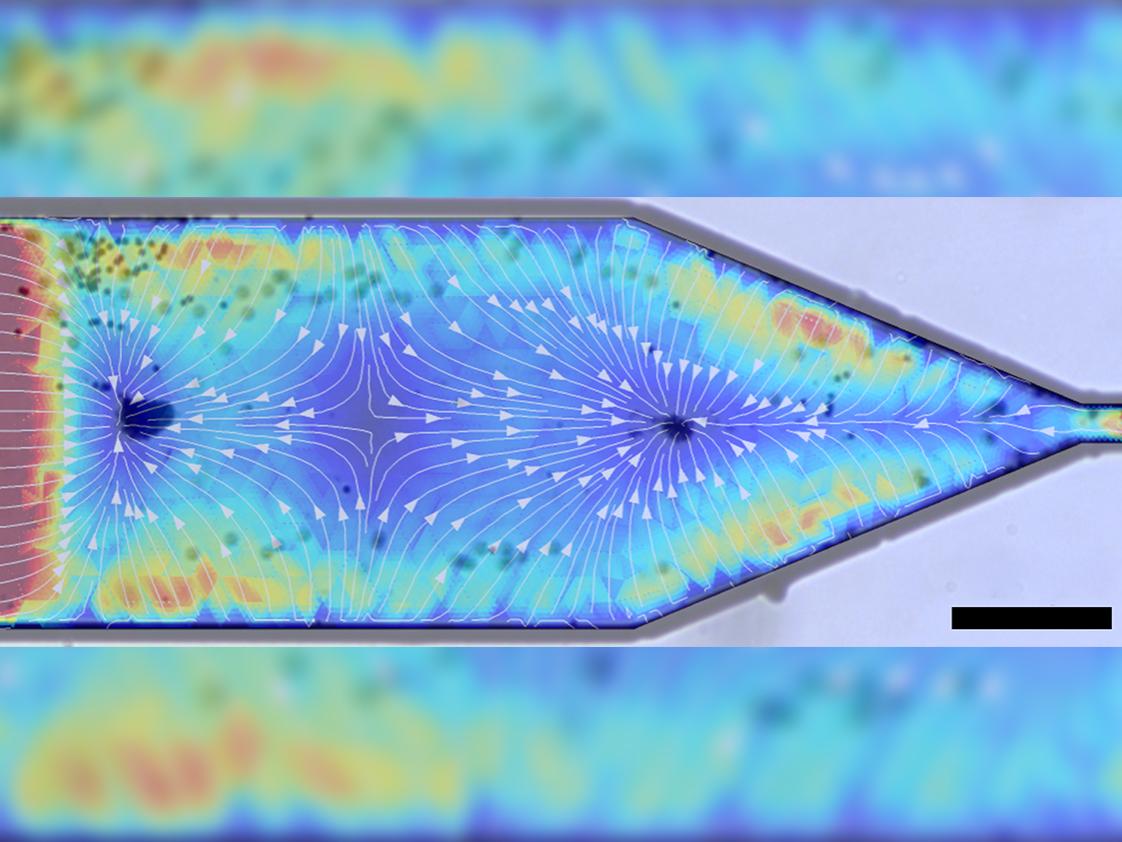| Jun 27, 2023 |
Researchers use ultrasound to control orientation of small particles
(Nanowerk News) Acoustic waves may be able to control how particles sort themselves. While researchers have been able to separate particles based on their shape — for example, bacteria from other cells — for years, the ability to control their movement has remained a largely unsolved problem, until now. Using ultrasound technology and a nozzle, Penn State researchers have separated, controlled and ejected different particles based on their shape and various properties.
|
|
They published their results in the journal Small ("Ultrasound Manipulation and Extrusion of Active Nanorods").
|
|
“We engineered a microchannel nozzle and applied ultrasound energy to the system,” said corresponding author Igor Aronson, the Penn State Dorothy Foehr Huck and J. Lloyd Huck Chair Professor of Biomedical Engineering and professor of chemistry and of mathematics. “The nozzle plays two roles. It concentrates fluid flow, which is something other researchers have done. But in addition to that, the walls of the nozzle reflect the acoustic waves of the ultrasound energy.”
|
 |
| An image of the modeling depicts how the applied ultrasound orients nanorods in a microfluidic nozzle. (Image: Igor Aronson)
|
|
Aronson and his collaborators worked with tiny materials called nanorods, which are some of the most studied synthetic self-propelled particles, according to Aronson. Because they are a similar size and have a similar swimming speed to bacteria, Aronson said, many of the conclusions drawn from observing nanorods can be applied to bacteria movement. For this reason, they are often used as proof of concept for future separation tasks.
|
|
In this case, the nanorods were half platinum and half gold. The researchers placed the nanorods in a nozzle, shaped like a miniature syringe, and then added hydrogen peroxide. The hydrogen peroxide is decomposed — or burned — on the platinum half of each nanorod, forcing them to swim in an imitation of how bacteria behave.
|
|
The researchers applied ultrasound to the nozzle, producing acoustic waves that, along with the flow of fluid, were able to separate the nanorod particles, aggregate them or extrude them from the nozzle.
|
|
"The separation concept relies on the fact that nanorods and spherical particles have different responses to acoustic radiation and generated fluid flow,” Aronson said. “By controlling the nozzle shape and the frequency and amplitude of the acoustic radiation, we can coerce particles of different shapes and material properties to behave differently. This, especially, applies to active particles such as nanorods: They can swim autonomously, and their control is especially challenging.”
|

